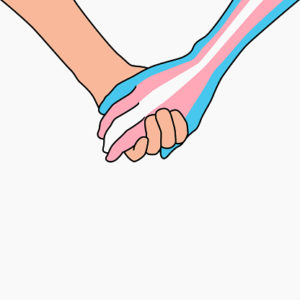Defining Sexuality
Table of Contents
The way we define our sexuality is as unique as the way we define ourselves, and the key is to understand what all the various terms mean. What if you didn’t have the word “straight” in your vocabulary. What if the terms heterosexual, homosexual, bisexual, et cetera, did not exist? One less topic of division and judgement. How different would you behave? We can all play a part in getting to a space where orientation, expression and presentation isn’t a trigger for anyone.

Photo by spl.ids.ag.uk
The Difference Between Sex and Gender
There’s a lot of information out there about sex and gender. And by sex, I don’t mean the various activities that could make up the act of sex. I mean the biological differences between males and females and the fact that gender is not the same thing. As a result, sex and gender are often confusing subjects for many. Sex refers to a person’s biological characteristics. While most people determine sex based on external genitalia, it also involves hormone ratios, chromosomal makeup and more. In other words, sex may not be as simple as you assume.

What is Intersex?
Since medical professionals often rely on external observations instead of internalized medicine or tests to assign sex categories, designated female at birth or assigned male at birth. The use of “intersex” is to designate individuals who, at birth, may not physically match the expected norms of male and female. Intersex individuals are as common as red heads. These assignments are based on a visual presence of a penis, clitoris, or a version of both.

What is Gender versus Gender Identity?
Gender, in contrast, is often used in reference to at least three factors: presentation, social roles and identity. If someone assigned as female at birth likes pink, for example, we associate pink as a “feminine” color and thus socially appropriate. If someone assigned as male likes pink, that individual may be bullied for liking a color associated with what the culture deems feminine. In this way, a person can use norms to present their gender to the world.
Gender identity, however, is invisible. It is the person’s idea of themselves. While it may be influenced by the society around them, it is often tested by questions like, “If there was no judgement, what would you want to look like?” Gender identity does not have to fit the presentation, social norms, or even the expectations of the person’s body. Someone can identify as a mix of genders, such as bigender, or feel they move between genders, such as gender fluid. They could even identify as having no gender at all, such as agender.

What is Transgender?
The term transgender, which is an adjective, is often used as an umbrella term to refer to people whose sex does not line up with their presentation and identity (among other characteristics, but naming just the two to help you get a basic understanding). For people whose sex, presentation, and identity line up, the term is cisgender. So, if you were born with a vulva and vagina, have always felt you were a girl or woman, and present yourself as such to society, you are considered a cis woman.
How to Ask About People’s Pronouns
So, although it may be human nature to be curious, being respectful means respecting people’s privacy. Do not ask people about their status or whether they plan to have surgery. Asking about their pronouns is OK. Also, give basic dignity and respect. If someone introduces themselves to you and says their name is Paula, but you had heard their name was Paul, this person is telling you their name is Paula. Just go with it. The only person who has the power to label you, is YOU!
LGBTQIA* Terms & Pronouns
So, let me share some general information about several terms the LGBTQIA* community uses which will make you a great ally. For starters, a binary system is something made up of two opposing parts. Gender (man/woman) and sex (male/female) are examples of binary systems.
Bisexual: A term that describes someone who is attracted to both men and women, or to more than one gender identity.
Gay: It is common for “gay” to be used by anyone who is attracted to their same sex or gender.

Gender Expression: How we express our gender identity on the outside.
Gender Identity: Our internal, personal sense of what our gender is. Everyone has a gender identity. You should also know the pronouns that can be used based on preference. They, Them, Theirs. He, Him, His. She, Her, Hers, Z. e, Hir, Hirs. Xe, Xem, Xyrs. Nothing. Yes, not choosing a pronoun is OK too.
































